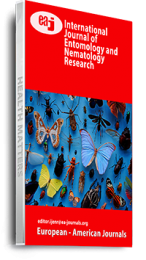Chrysomya rufifacies (Macquart), is a species of biosecurity, medical and forensic importance. This fly is a pathogen-transmitting species, myiasis producer, and early colonizer of human and animal remains. Despite the commonality of Ch. rufifacies in Sri Lanka, developmental studies have never been performed in this region and the effects of an intraspecific diet have never been tested. In the current research, Ch. rufifacies immatures were reared on skeletal muscle, liver, and heart from domestic swine, with colonies maintained at 25°C and 28°C. The minimum time needed to complete each instar of life at 25°C was the fastest on liver (224.14 h), followed by skeletal muscle (249.33 h) and heart (251.64 h). Whereas at 28°C, fly development was fastest on heart muscle (178.27 h), followed by liver (178.50 h) and skeletal muscle (186.17 h). This study revealed that temperature has a significant impact on the total developmental time, as well as on the length and the width of the fly immatures.
Keywords: Chrysomya rufifacies, Forensic Entomology, Growth Rate, Intraspecific diet, Larval length, Larval width

